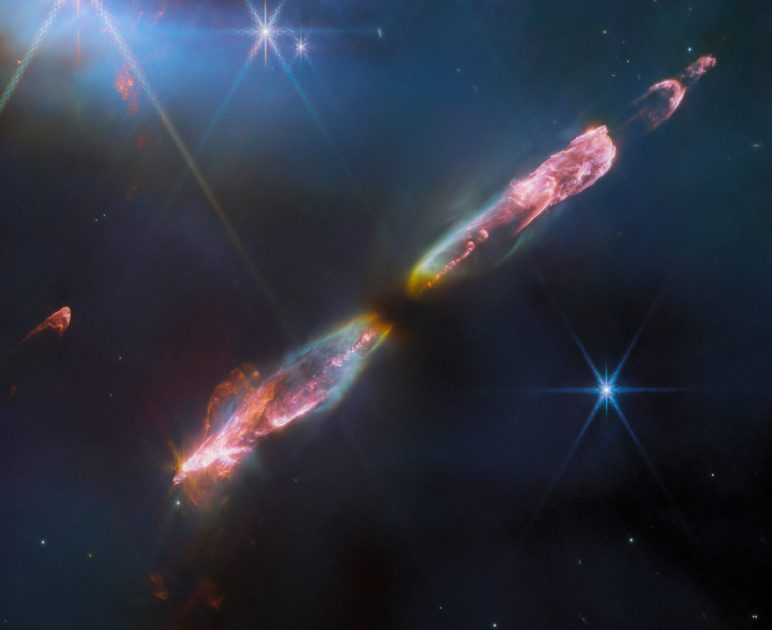James Webb Space Telescope image shows stunning view of young star blasting supersonic jets

NASA’s James Webb Space Telescope, the most advanced space-observing machine to date, has once again provided us with a stunning image of a young star, known as Herbig-Haro 211 (HH 211), emitting supersonic jets of matter. The Webb image provides a high-resolution, near-infrared glimpse into the dynamic life of a fledgling star, reminiscent of our own sun in its infancy.
HH 211 resides approximately 1,000 light-years away from Earth, nestled within the constellation Perseus. At the heart of this stellar view is a protostar (which is not seen in Webb’s image), is suspected to be a binary star and likely represents what our sun used to be like when it was just a few tens of thousands years old with just 8% of its current mass. It will eventually grow into a star like the sun,” JWST representatives wrote in a statement published Thursday.
The protostar is actively drawing in surrounding gas and dust to fuel its growth, while simultaneously ejecting material into space in a bipolar outflow, according to NASA. These jets, captured by the James Webb Space Telescope, reveal themselves as vivid, colorful swirls as they interact with interstellar matter.

JWST’s exceptional infrared capabilities enable astronomers to penetrate the dense veils of gas and dust shrouding these developing stars, granting unprecedented access to their chemical composition and behavior.
In the case of HH 211, data collected by the Near Infrared Spectrograph (NIRSpec) instrument revealed a surprising characteristic: the jets from young stars like HH 211 are slower and contain richer molecular content, including carbon monoxide, silicon monoxide, and molecular hydrogen, compared to the faster jets expelled by older stars. This difference arises because the shockwaves surrounding young stars lack the energy required to break down molecules into individual atoms.
In addition, HH 211 is a prime example of a rapidly evolving object, where gas swirls can vanish within a few years, only to reappear in seemingly empty regions of space. The exquisite detail captured by the James Webb Space Telescope unveils a series of bow shocks and a narrow bipolar jet, providing astronomers with valuable insights into the intricacies of this celestial phenomenon.
This remarkable image not only highlights the power of Webb’s infrared imaging capabilities in studying newborn stars and their outflows, it also sheds light on the enigmatic processes taking place within these stellar nurseries and underscores the telescope’s pivotal role in advancing our understanding of the cosmos.


